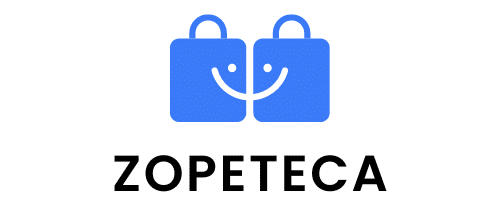In the climate of the COVID-19 pandemic, hygiene has become a primary concern of people around the globe. Governments and organizations have implemented various strategies and technologies to curb the spread of the virus. The United Kingdom is no exception to this trend, and in the past few months, there has been a notable uptick in innovative measures intended to ensure the safety of the country’s citizens.
One such promising advancement that has gained significant attention is UVC light disinfection. This technology has proven effective in eliminating many types of bacteria and viruses, including the virus that causes COVID-19. Ultraviolet (UV) disinfection uses light in the UV-C spectrum to break down the DNA or RNA of harmful microorganisms, rendering them incapable of reproducing and causing infection.
Sujet a lire : What’s the Potential of Smart Diapers in Enhancing Infant Health Monitoring?
This article will discuss the latest developments in UV-C lighting technology for disinfection of public spaces in the UK, highlighting its effectiveness, safety measures, and prominent providers such as Signify.
The Effectiveness of UV-C Light in Disinfection
UV-C light disinfection has emerged as a powerful tool in the fight against infectious diseases. It works by targeting the DNA and RNA of viruses and bacteria, rendering them unable to reproduce and spread. This section delves into the science behind this highly effective disinfection method.
En parallèle : What’s the Role of Digital Libraries in Preserving UK’s Cultural Heritage?
UV-C light has a wavelength of approximately 200 to 280 nanometres, placing it at the far end of the UV spectrum, and making it the most dangerous type of UV light to living organisms. However, this same trait also makes it incredibly effective for disinfection. When UV-C light is emitted, it is absorbed by the DNA and RNA of microorganisms. This absorption causes a photochemical reaction that leads to the formation of pyrimidine dimers – a type of molecular lesion that prevents DNA and RNA replication. As a result, the microorganism cannot reproduce or infect other cells.
A key benefit of UV-C lighting for disinfection is that it does not rely on chemicals and therefore does not leave any residue. This makes it ideal for use in a wide variety of environments, including public spaces where large numbers of people gather. It is also effective against antibiotic-resistant bacteria, which are increasingly a public health concern.
Safety Measures for UV-C Lighting
Just as UV-C light is harmful to bacteria and viruses, it can also be damaging to human cells. However, the use of UV-C for disinfection in public spaces can be managed safely with the proper precautions. Here, we will discuss the safety measures required for UV-C lighting.
Since the UV-C spectrum of light can cause skin burns and eye injuries, it is crucial to ensure that people are not directly exposed to the light. This can be achieved in several ways. For instance, UV-C disinfection could be scheduled for times when the spaces are not occupied, such as overnight in offices or during off-peak hours in public transport vehicles.
In addition, protective measures can be implemented to minimize exposure if UV-C lighting is used in the presence of people. For example, UV-C lamps can be installed in upper-room air disinfection systems, where the light is directed upwards and shielded to prevent direct exposure to individuals in the room.
Signify, a leading provider of lighting solutions, has developed a UV-C lighting product that combines effectiveness and safety. The company’s UV-C disinfection upper air luminaires are designed to be mounted high up in the room, safely disinfecting the air while people go about their activities below.
Latest UV-C Lighting Products in the Market
The increasing demand for effective disinfection solutions during the COVID pandemic has driven the development of several UV-C lighting products. This section will introduce the latest UV-C lighting products available in the UK market.
Signify, the world’s largest lighting company, has been leading the way in UV-C lighting technology. Their product range includes UV-C disinfection upper air luminaires, UV-C disinfection chambers, and UV-C disinfection trolleys. These products can be used in various environments, from offices and schools to public transport and healthcare facilities.
Another player in the market is UV Light Technology, a UK-based company specializing in UV disinfection products. Their UV-C air steriliser is specifically designed for indoor use, providing continuous air disinfection in workplaces, schools, and healthcare settings.
The Future of UV-C Lighting in The UK
Given the ongoing threat of COVID-19 and other infectious diseases, the need for effective disinfection methods will remain paramount. Looking ahead, UV-C lighting technology is poised to play a significant role in ensuring indoor safety in the UK.
While UV-C lighting technology has been around for some time, its potential for widespread use in public spaces is just beginning to be realized. As the technology improves and becomes more accessible, it is likely to become a common feature in various public spaces.
Furthermore, as the understanding of UV-C light’s effectiveness and safety continues to evolve, regulations governing its use are expected to become more defined. This will provide clearer guidelines for businesses and organizations looking to implement UV-C lighting solutions, paving the way for broader adoption of the technology.
While we continue to navigate the realities of the pandemic, advancements in technologies like UV-C lighting offer a beacon of hope. By harnessing the power of UV light, we are better equipped to ensure safer public spaces for all.
Innovations in UV-C Lighting for Improved Disinfection
As the COVID-19 pandemic continues, innovations in UV-C lighting technology are playing a crucial role in enhancing the disinfection of public spaces in the UK. This section will explore a few of these innovations.
One notable innovation is the development of UV-C lamps for upper air disinfection. These lamps, designed to be installed high up in the room, direct the UV-C light towards the ceiling and away from individuals in the room. This allows for continuous disinfection of the air while minimising the risk of exposure to the harmful UV-C light. Companies like Signify and UV Light Technology are at the forefront of these innovations, offering a range of products suitable for various environments.
Another promising development is the use of UV-C lighting in air circulation systems. By incorporating UV-C lamps into HVAC (Heating, Ventilation, and Air Conditioning) systems, the air in a space can be continuously disinfected, reducing the concentration of airborne bacteria and viruses.
There has also been progress in the use of portable UV-C disinfection devices. For instance, the UV-C disinfection trolley by Signify, and the portable UV-C air sterilisers by UV Light Technology, can be moved from room to room for efficient disinfection of multiple spaces.
Lastly, companies are continuously striving to improve the safety features of UV-C lighting products. For example, some products now include sensors that automatically turn off the UV-C light when movement is detected, reducing the risk of exposure to humans.
Conclusion: The Bright Future of UV-C Light Disinfection
In conclusion, UV-C light disinfection is a potent tool in the battle against infectious diseases like COVID-19. Its ability to effectively eradicate a wide range of bacteria and viruses, including SARS-CoV-2, makes it an invaluable asset in maintaining the hygiene of public spaces in the UK.
While there are risks associated with the use of UV-C light, including potential harm to skin and eyes, these can be effectively managed with appropriate safety measures. Innovations in the field are continuously improving the safety and efficiency of UV-C lighting products, making them increasingly suited for widespread use in public environments.
Looking forward, improvements in UV-C technology and greater understanding of its effectiveness and safety are likely to result in more defined regulations governing its use. This, coupled with further advancements in UV-C lighting products, will pave the way for broader adoption of this technology, ensuring safer public spaces for all.
As we continue to grapple with the challenges posed by the COVID-19 pandemic, innovations like UV-C lighting offer a glimmer of hope. By harnessing the germicidal properties of UV-C light, we are better placed to protect ourselves and others from harmful bacteria and viruses. This marks a significant step forward in our collective effort to curb the spread of infectious diseases and ensure the safety of the public.






